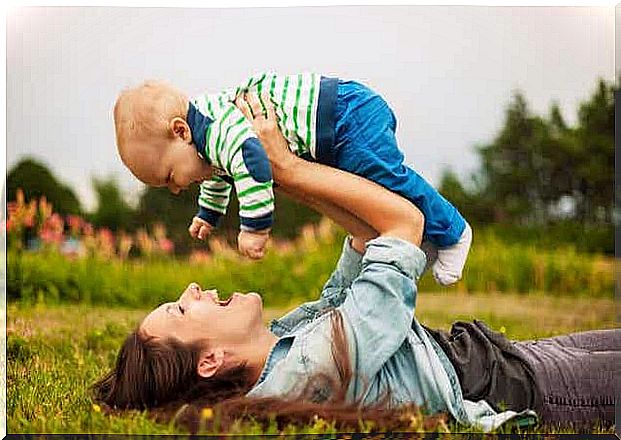Parenting From A Child’s Perspective

Raising from a child’s perspective means taking into account and adapting to each child’s developmental process. We think it is important to guide our child in his development. However, if we want to have a good relationship with them, we have to do it from their point of view. Often we look from our own point of view as adults.
It is therefore important to build strong bonds with our children so that they can grow up healthy. We will achieve this by respecting the pace at which they mature and by using love and empathy.
After all, childhood is one of life’s great treasures. Every child’s relationship with their parents can facilitate or hinder their healthy development. This depends on many interdependent factors.
Parenting from a Child’s Perspective: Strong and Healthy Bonds
We need to build bridges to connect our adult world with the child’s world. We must therefore replace the classic view of the adult model ( “I know, you don’t know” ) with the healthy and rare exercise of empathy.
The most important element in parenting is our view – how and from what position we interact with our children. We can distinguish between two kinds of perspectives to distinguish the forms of relationship with our child. The vertical perspective and horizontal perspective.

The vertical perspective
This way of parenting, or this perspective, is when the adults guide their child’s development ‘from above’. The thinking is that you should ‘educate the child because they don’t know’.
For example, they have to sleep alone even when they cry for their mother, they have to eat everything even if they are not ready, or they have to talk even if they are not ready to socialize yet.
With this perspective, the parent ‘teaches’ the child everything, even regarding their natural functions, which their bodies take care of in their own way. This shows that they do not understand the growth rate and their capacity for self-regulation.
The horizontal perspective
This way of parenting teaches a child by respecting and empathizing with his own pace of development. The adult therefore sees things from the child’s level and point of view and guides them in their development.
If we raise from a child’s perspective, we can see when they are ready to take the next step in their development. We will not be tempted to force them to achieve goals they are not ready for.
The needs of a child versus the needs of an adult
Until they are 3 years old, children do not understand reasoned explanations. Until then, they are simply waiting for us to respond to their needs in order to feel safe by our side.
In this sense, the essential key to understanding their emotional needs is to do so with the patience, respect, and emotional support they need during their first six years of life. It is at this stage that their character is formed along with a strong bond with the parents.
The Child’s Perspective: Differences Between Child and Adult Needs
Adults and children have completely different needs for one simple reason: maturity. Children have not yet reached adulthood.

Raising from a child’s perspective
- Children depend on us for their growth, while we need to let them grow up as quickly as possible so that they can become independent.
- They need mom or dad to sleep and feel safe, while we want them to be able to sleep alone.
- Kids want to play non-stop because that’s their way of learning, while we have to rest when we’re done with our work.
- Children want to talk all the time and we need to listen to their stories, while we often need a little quiet time after a hard day’s work.
We could go on with all the differences in needs between children and adults. Our needs are often contradictory and sometimes even incompatible. Because children live from the point of view of pleasure, they should feel good and their needs are met, while we live from the point of view of duty.
A child’s emotional needs
However, we must not forget that in order to grow up healthy and safe, children must meet their emotional needs. When they cry, their parents should pay attention to their crying. We must have physical contact with them and respect their pace of development.
So we can make sure that our children become rational and caring adults in the future by raising them from a child’s perspective. We can achieve this by putting ourselves in their shoes, respecting their pace of development. In this way they will grow up to be healthy and happy children.









